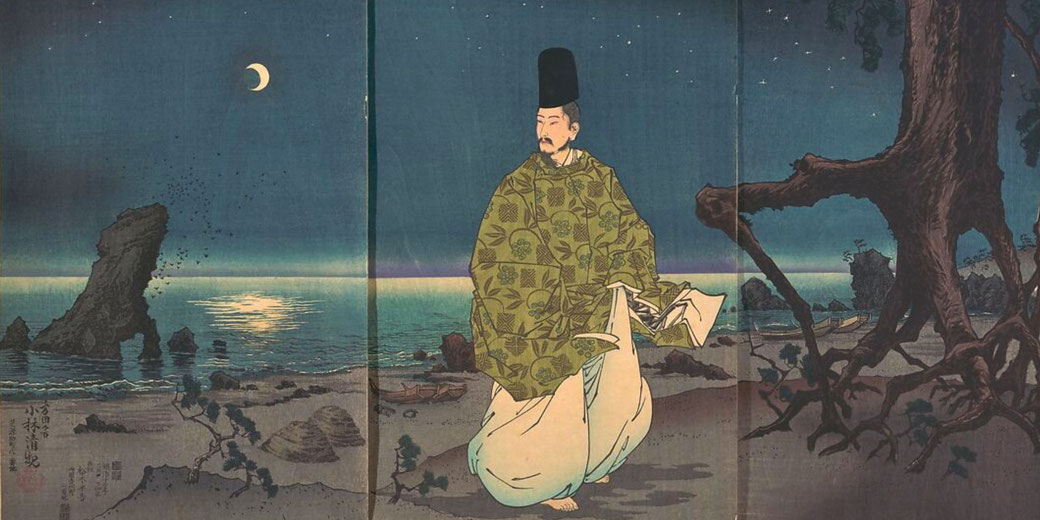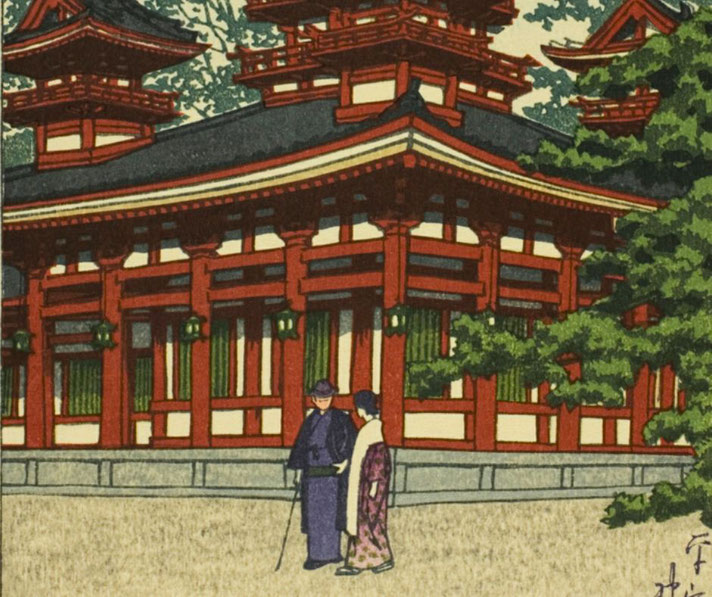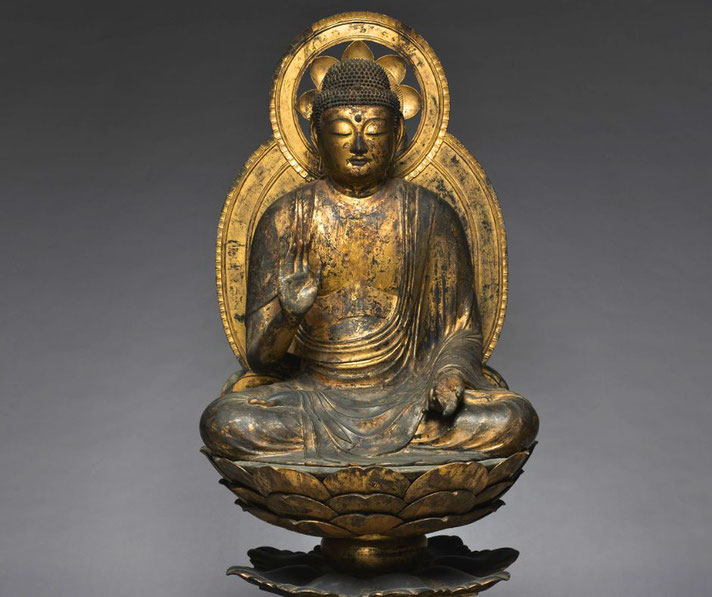What was the Heian Period and how did it change Japan?

Japan's history is divided into large periods of time, each unique in their contribution to the nation's cultural, political, and societal fabric.
One such period, known for its profound influence on Japan's identity, is the Heian Period. Spanning nearly four centuries from 794 to 1185 AD, it emerged as a critical era that signaled the blossoming of Japan's indigenous culture, unhindered by the dominant Chinese influences of preceding epochs.
Welcome to the Heian Period
The Heian Period takes its name from the city of Heian-kyo, present-day Kyoto, which was established as the new capital after the shift from Nara.
As the heart of politics and culture, Heian-kyo witnessed the unfolding of dramatic changes in governance, economic patterns, and artistic traditions.
It is during this period that Japan saw the apex of the imperial court's power, along with the conspicuous dominance of the Fujiwara clan.
This era's significance extends beyond politics into remarkable cultural and artistic advancements.
The efflorescence of literature, poetry, art, and architecture, characterized by a distinct Japanese style, encapsulated the refined aesthetics and courtly manners of Heian society.
It was also a period that saw the deepening influence of Buddhism, coalescing with indigenous Shinto beliefs, profoundly shaping spiritual, artistic, and daily life.
However, the Heian period wasn't solely a time of cultural refinement and opulence.
Its later years foreshadowed a gradual shift in power dynamics, the rise of the warrior class, and the eventual decline of the imperial court's authority, which paved the way for Japan's feudal era.

The political revolution of the Heian Period
In 794 AD, the capital of Japan was moved from Nara to Heian-kyo, the city of peace and tranquility, now known as Kyoto.
This move was driven by Emperor Kammu, with the intention of reducing the political influence of Buddhist monastic establishments in Nara, and centralizing power under the imperial rule.
Heian-kyo was meticulously planned and modelled after the Tang Dynasty's capital Chang'an, reflecting the Chinese influences that still permeated the Japanese political system.
The Heian court emerged as the epicenter of Japanese politics. Despite the emperor's symbolic status as the supreme ruler, real political power often lay with the court aristocracy.
Central governance was in the hands of a select few court nobles who held various offices, controlling different aspects of the state's functioning.
The imperial family, however, continued to hold significant religious and ceremonial authority.
Among the noble families, the Fujiwara clan stood out for their unprecedented control over the Heian court.
They solidified their power through strategic marriages to the imperial family, creating a system where the emperor was often a minor and the Fujiwara patriarch served as regent, exercising considerable political power.
This pattern led to an era known as the "rule of the regents," which saw the Fujiwara clan dominating Japanese politics for over two centuries.
Economic and social changes
Early Heian period saw the continuation of the Ritsuryō system, a legal and administrative structure heavily influenced by Chinese Tang models.
Within this framework, an intricate taxation model was operational, with taxes often paid in kind through rice, fabrics, and labor services.
Over time, though, the system became increasingly complex and less effective, especially in the more remote provinces.
The distances and inefficiencies in tax collection fostered a semi-autonomous local aristocracy and landowning class, who began to consolidate economic power.
This consolidation led to the development of the shōen system, where large estates were exempt from central government's taxation and interference, often in exchange for protection or services.
As these estates expanded, they nurtured a new class of provincial warriors or samurai.
These warriors provided local security, managed lands, and maintained order, gradually establishing themselves as influential powerholders in Japan's socio-economic landscape.
In terms of social structure, Heian society was highly stratified. At the top were the imperial family and the court nobles, including the Fujiwara clan, who enjoyed immense power and privileges.
This upper class was followed by the middle-ranking officials and local provincial elites, while commoners and slaves made up the lower tiers.
However, social mobility, although limited, was possible, often through clerical roles in Buddhist temples or rising in the ranks of provincial warrior elites.
Gender roles and norms in the Heian period were distinctively shaped by the social class.
In the upper-class society, particularly within the confines of the Heian court, women experienced relative autonomy and cultural influence.
However, in the lower classes, women's lives were likely more confined to traditional roles.
Cultural and artistic developments
The Heian period is often regarded as the apex of Japanese classical culture, with artistic and cultural forms maturing into distinctively Japanese styles.
This era witnessed an outpouring of creative expression that touched every aspect of life, from literature and poetry to visual arts, architecture, and fashion.
The literary world of Heian Japan was incredibly vibrant, largely due to the development of hiragana, a phonetic script that facilitated the creation and consumption of Japanese literature.
This era produced some of the most notable literary works in Japan's history, most famously "The Tale of Genji" by Murasaki Shikibu.
Considered the world's first novel, this piece masterfully depicted court life, love, and politics.
Equally significant was Sei Shonagon's "The Pillow Book," an insightful collection of anecdotes, poems, and observations about court life.
These works, among others, highlight the critical role women played in Heian literary culture.
Visual arts such as painting and calligraphy flourished during the Heian period, drawing heavily on religious themes, especially from Buddhism.
Emakimono, or illustrated narrative scrolls, emerged as a popular art form, bringing together painting, calligraphy, and literature.
The "Tale of Genji" scroll is a prime example of this art form.
Heian architecture followed the Chinese Tang style initially but evolved to incorporate indigenous elements.
The imperial palace and Buddhist temples were architectural marvels, exuding elegance and grandeur.
Kyoto's Byodo-in temple, with its Phoenix Hall that symbolizes the Buddhist Paradise, is a surviving example of Heian architectural opulence.
Clothing, especially within the Heian court, also reflected artistic evolution. A complex layering system known as juni-hitoe became popular among noblewomen.
This twelve-layered robe showcased a variety of colors and subtle patterns, reflecting the wearer's taste and the changing seasons.
Rapid religious changes in the Heian Period
Buddhism in the Heian period saw the emergence and spread of new sects and philosophies.
The two most influential were the Tendai and Shingon, introduced by Saicho and Kukai, respectively.
Both monks brought back these forms of Buddhism from China, which emphasized complex rituals and teachings.
Tendai Buddhism was known for its inclusive approach, accommodating various Buddhist teachings, while Shingon, or Esoteric Buddhism, focused on rituals and mantras as means to achieve enlightenment.
Later in the Heian period, Pure Land Buddhism gained popularity, particularly among the common people.
This form of Buddhism emphasized faith in Amida Buddha and the promise of rebirth in the Western Paradise.
Its simplicity and accessibility contrasted with the more esoteric forms of Buddhism prevalent in the early Heian period and made it a popular choice among the masses.
Shinto, on the other hand, centered around the worship of kami, or spirits associated with natural elements and phenomena.
During the Heian period, Shinto did not exist as a separate or organized religion but was a complex web of local and clan-based faiths.
It permeated daily life and court rituals, coexisting with the Buddhism imported from the Asian mainland.
One of the unique features of the Heian period was the syncretism between Shinto and Buddhism, often referred to as Shinbutsu-shūgō.
Buddhist temples often included Shinto shrines, and vice versa, reflecting an intertwined spiritual life.
This syncretism also manifested in art and culture, with Buddhist and Shinto themes often blending in paintings, literature, and architecture.

Why did the Heian Period end?
Despite the grandeur and sophistication of Heian culture, the period was not immune to socio-political upheavals and systemic vulnerabilities that eventually led to its decline.
The final centuries of the Heian period saw the rise of powerful military families, internal power struggles, and the weakening of central authority, setting the stage for the transition to the Kamakura Shogunate.
One of the key factors in the Heian period's decline was the shōen system's expansion.
As mentioned earlier, these large, tax-exempt estates were under the control of powerful local lords who maintained their private armies.
As the influence and autonomy of these local elites grew, central control from Heian-kyo diminished, leading to a progressively decentralized power structure.
Simultaneously, the growing strength of warrior families, particularly the Taira and Minamoto clans, began to challenge the political supremacy of the court aristocracy.
Skilled in martial arts, these warrior families became indispensable for controlling the shōen and maintaining order.
Their rising power was soon translated into political aspirations, turning them into serious contenders for national control.
Meanwhile, within the Heian court, the Fujiwara regents' grip on power loosened due to internal rivalries and succession disputes.
The increasing inability of the imperial court to maintain control, coupled with the mounting strength of the warrior clans, led to a shift in the political landscape.
The final blow to the Heian period came with the Genpei War (1180-1185), a national civil war between the Taira and Minamoto clans.
The eventual victory of Minamoto no Yoritomo led to his appointment as the shogun, or military dictator, in 1192, marking the beginning of the Kamakura Shogunate.
What do you need help with?
Download ready-to-use digital learning resources
Copyright © History Skills 2014-2025.
Contact via email
With the exception of links to external sites, some historical sources and extracts from specific publications, all content on this website is copyrighted by History Skills. This content may not be copied, republished or redistributed without written permission from the website creator. Please use the Contact page to obtain relevant permission.





